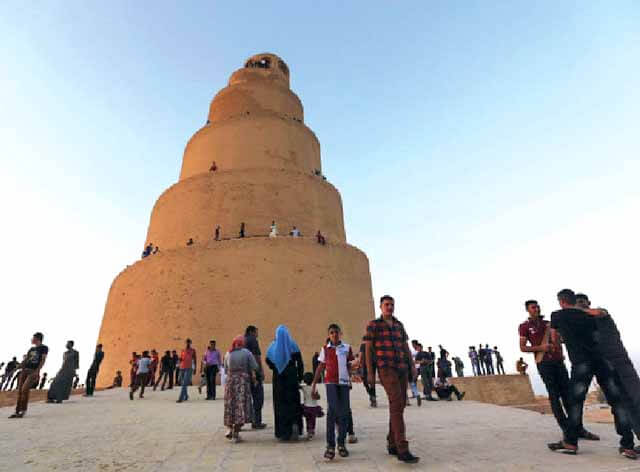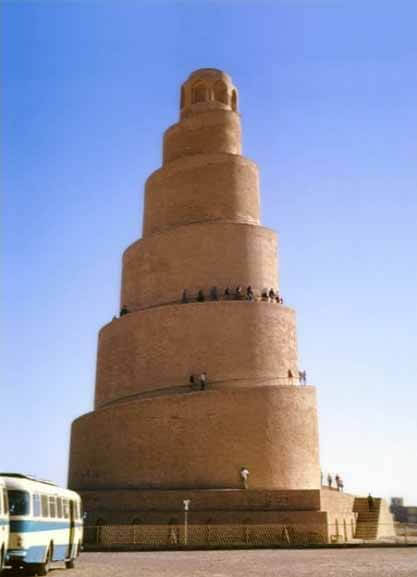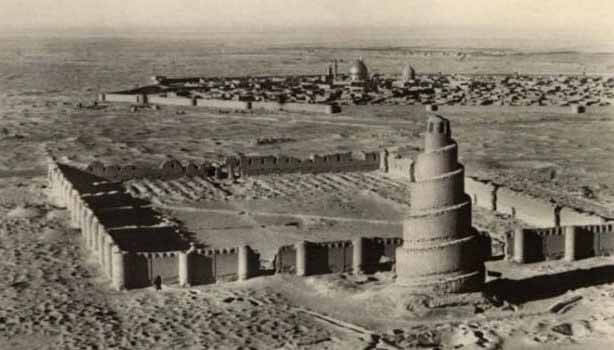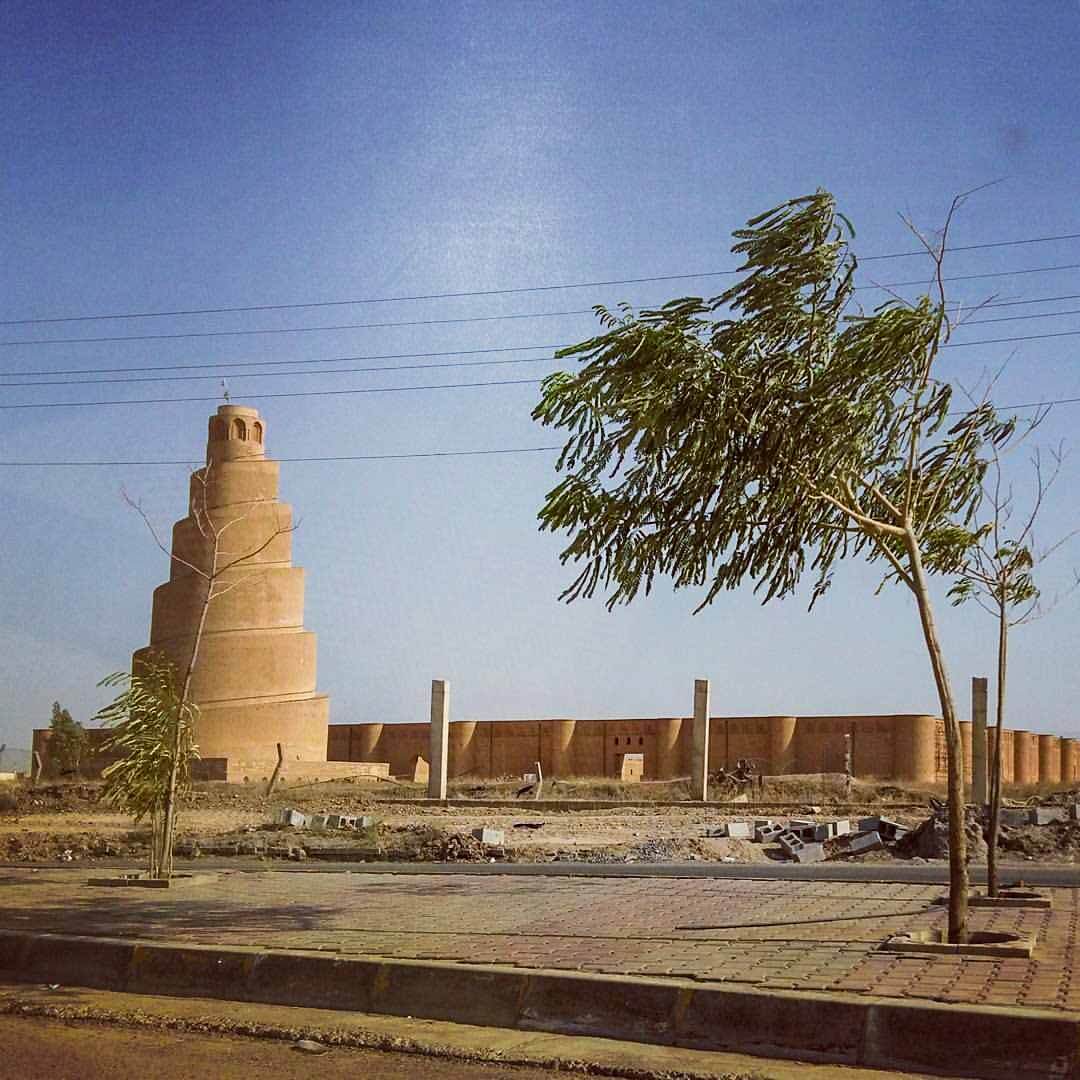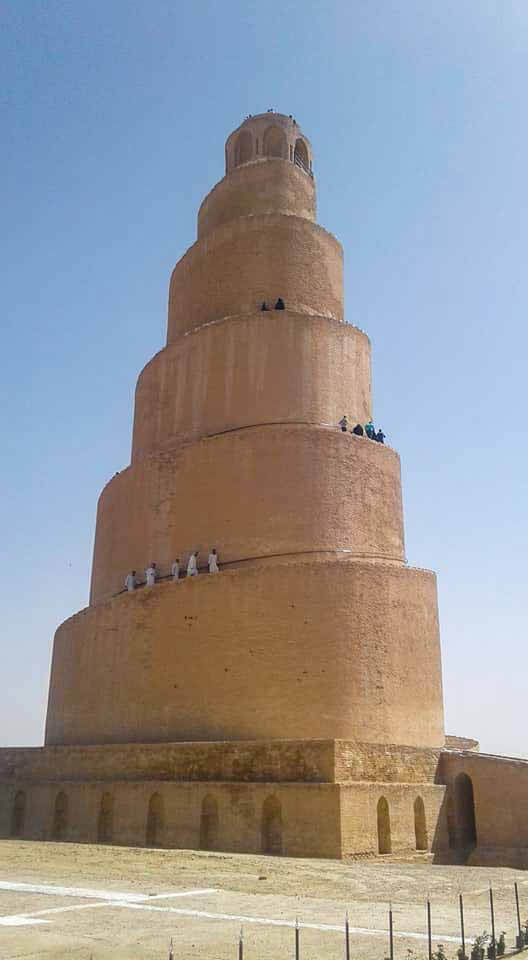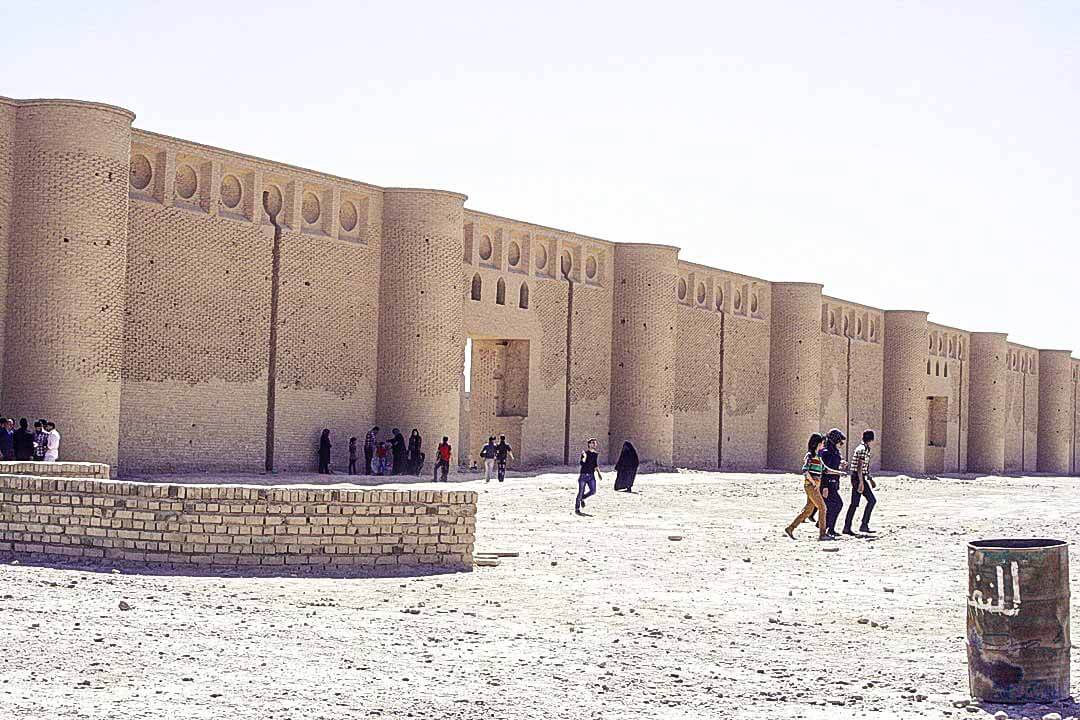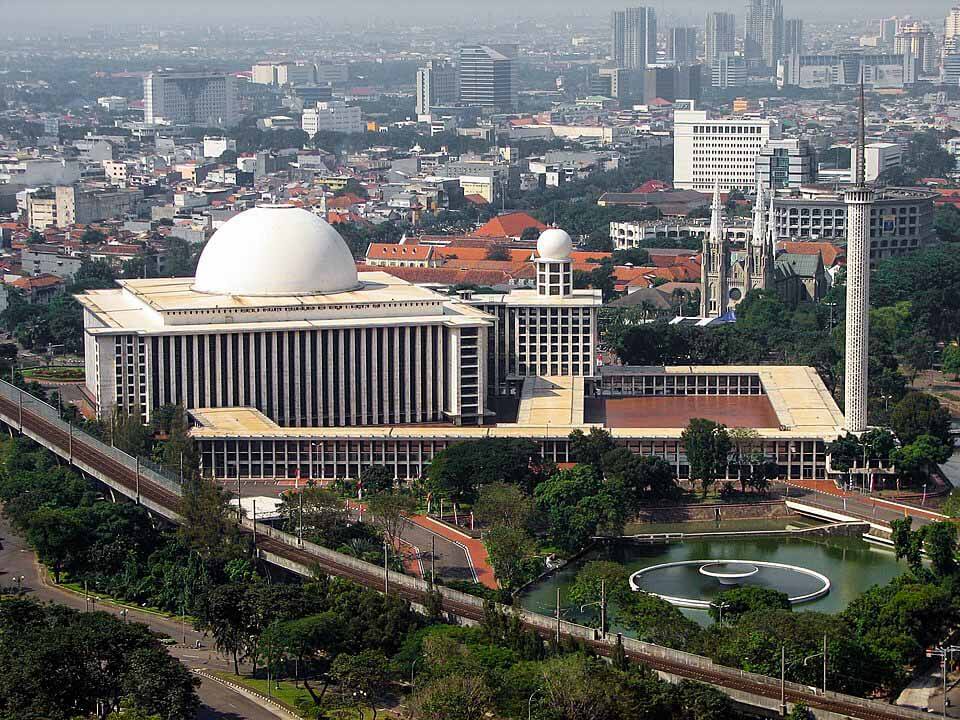Samarra, Iraq
Coordinates: 34.2073, 43.8804
The Great Mosque of Samarra is a mosque from the 9th century CE located in Samarra, Iraq.
The mosque was commissioned in 848 and completed in 851 by the Abbasid caliph Al-Mutawakkil who reigned (in Samarra) from 847 until 861.
The mosque is located within the 15,058-hectare (37,210-acre) Samarra Archaeological City UNESCO World Heritage Site, listed in 2007.
The mosque itself was destroyed in 1278 (656 AH) after Hulagu Khan’s invasion of Iraq. Only the outer wall and its minaret remain.
The Minaret
The Great Mosque of Samarra was, for a time, the largest mosque in the world; its minaret, the Malwiya Tower, is a spiralling cone 52 metres (171 ft) high and 33 metres (108 ft) wide with a spiral ramp.
The Minaret was originally connected to the mosque by a bridge. The minaret or tower was constructed in 848–852 of sandstone, and is unique among other minarets because of its ascending spiral conical design. 52 metres (171 ft) high and 33 metres (108 ft) wide at the base, the spiral contains stairs reaching to the top.
The height of the Malwiyyah made it practical to be used for the adhan (call to prayer). It is visible from a considerable distance in the area around Samarra and therefore may have been designed as a strong visual statement of the presence of Islam in the Tigris Valley.
The minaret’s unique spiral design is said by some to be derived from the architecture of the Mesopotamian ziggurats. Some consider the influence of the Pillar of Gor, built in the Sasanian Empire, more prominent.
In 2005 the top of the Malwiya minaret was bombed. The famous minaret was partially destroyed by insurgents.
Nearly 1000 years after it had been built it finally began to crumble because of today’s weapons.
Many different stories and theories exist as why to the minaret was bombed.
Some claim the attack was directed against US forces, while others such as Tony Blair assert that the bombing was carried out to instigate secular warfare. Since this happened it has shortened the lifespan of the minaret.
Conflicting stories exist as to why the tower was attacked. If the latter is true, the lifespan of the minaret could be dramatically shortened given the uncertain and unstable political situation in Iraq.


